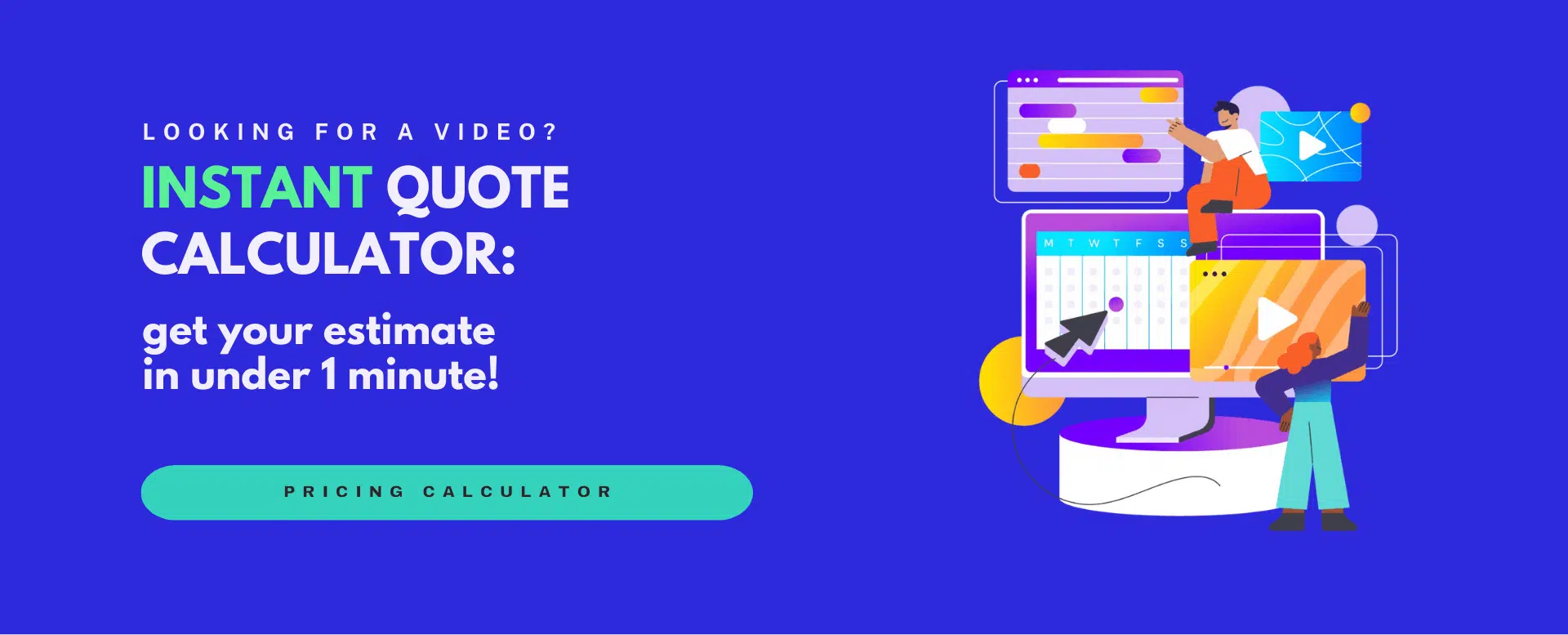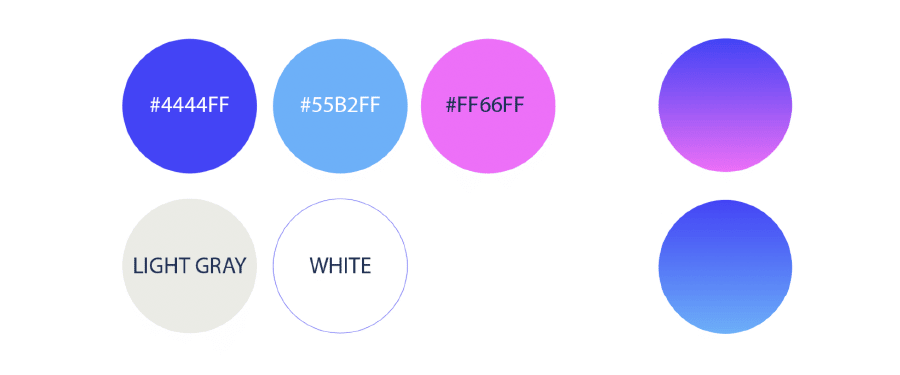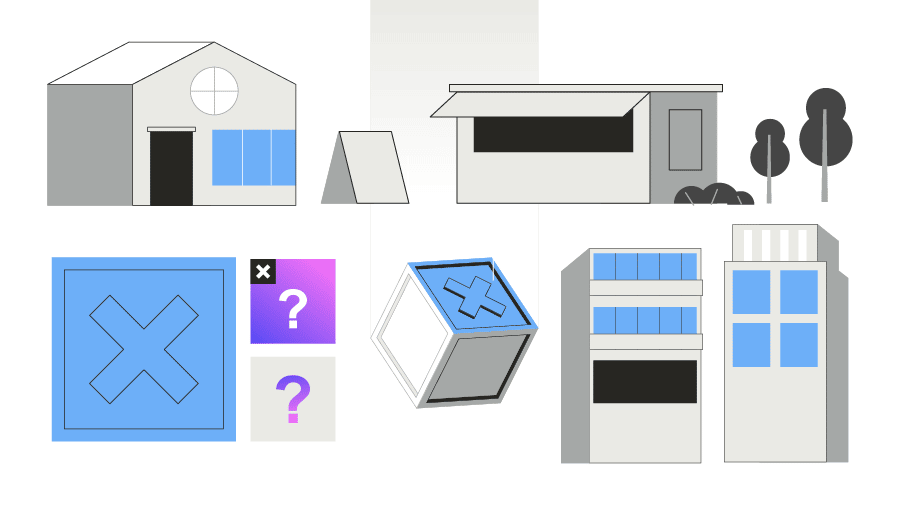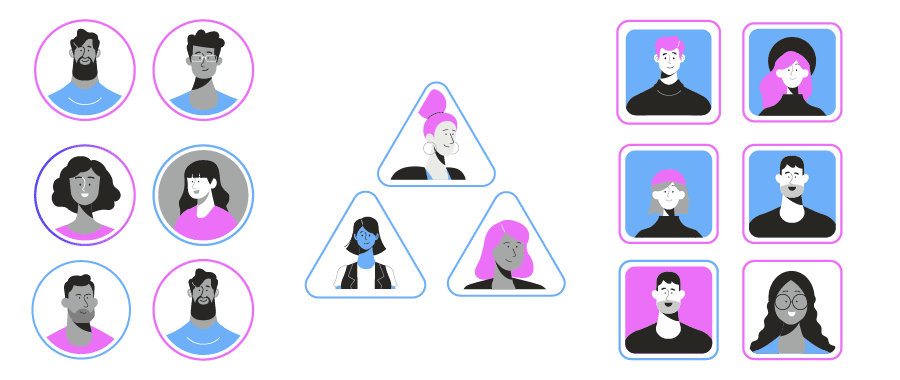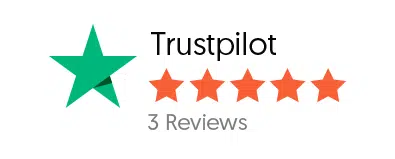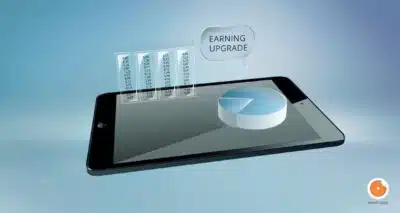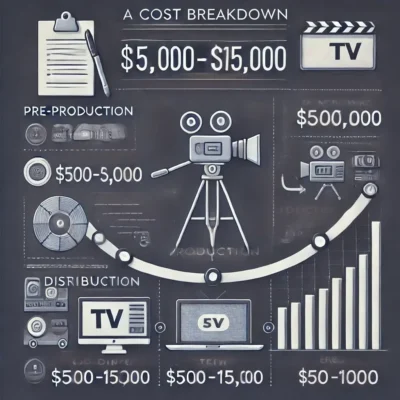The 10 Steps of the Animation Process! (Full Guide 2025)
17/10/24
Author: Florencia Oliveto
23 min reading
Video ProductionVideo Production Companies
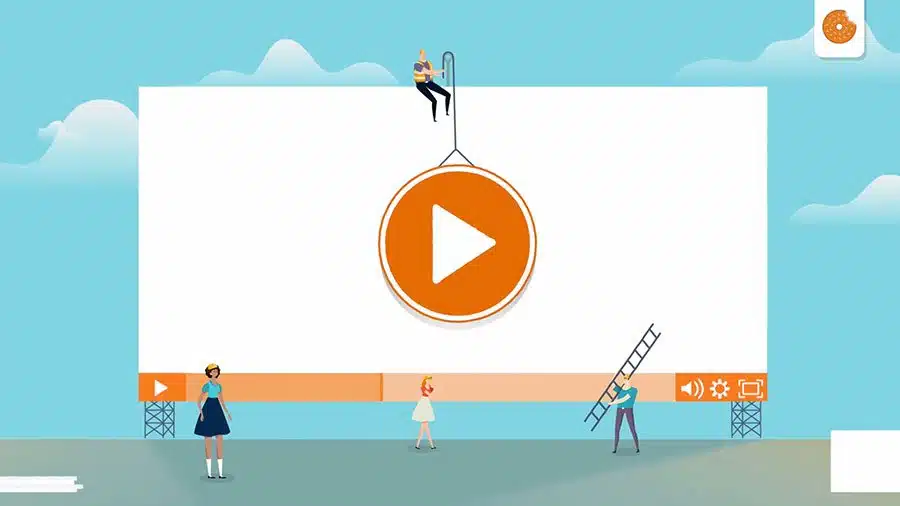
You probably already know that animated videos, like animated explainer videos and whiteboard animations, allow you to transmit your company’s message with ease and simplicity, even if your product or service is super complex to understand at first glance. However, you likely don’t know much about how to make an animation that stands out or even what the actual animation process entails.
Whether you’re embarking on this new journey to make an animation on your own or are considering enlisting the help of a professional video marketing agency, I want you to be fully prepared for the animation steps ahead of you. So, in this article, I’ll tell you all about how we here at Yum Yum Videos go about making animation videos that shine!
Ready? Let’s begin!
Table of Contents
What Is the Animation Process?
The animation process is the step-by-step workflow used to create animated content, whether for films, videos, or digital media. It typically involves several stages, such as concept development, scriptwriting, storyboarding, character and visual design, animation, and post-production work like sound design, editing, and adding special effects. This process can vary depending on the animation style, such as 2D, 3D, or stop-motion, but it generally aims to transform ideas into a fluid, engaging sequence of motion and sound. We’ll take a closer look at each animation step in a few seconds!
A Bit of History on the Animation Production Process
Animation has been around for quite a while now. However, the process required to make an animation in ways that bring characters and stories to life was quite different before the advent of computers and digital tools revolutionized the video industry. Back then, films and short videos were made entirely by hand, following a complex and painstaking process that could take years to complete.
The hand-drawn animation technique involves sequentially drawing each frame of a story on a transparent plastic sheet called a “cel.” Then, each cel is photographed and played back in rapid succession to create the illusion of motion.
This animation production process required highly skilled professionals and meticulous attention to detail, which is why only the top animation studios worked with it. Ultimately, it was replaced by more modern techniques like computer-generated 2D and 3D animation.
10 Steps of the Animation Process
For most projects, the animation process consists of the same ten basic steps::
1. Research
2. Script
3. Storyboard
4. Art Direction
5. Voiceover narration recording
6. Illustration
7. Animation
8. Sound Design
9. Integration
10. Deliverable
I’ll go over these animation steps one by one, giving you a detailed overview of what each of them typically entails in our 2D animation studio.
Looking for a company to help? Get in touch! We’ll give you a detailed quote fully tailored to your project’s specific needs and any other information you might need.
Step 1 of the Animation Process – Research: Getting to Know Your Brand
Making animated ads is not only about character design and script brainstorming. In fact, it’s crucial to gain a thorough understanding of your business first. That’s why we always take the time to learn as much as possible about your brand and your product or service so we can discover the specific needs and goals for your video.
How do we tackle this animation step? Well, we send clients a creative brief with questions about their brand’s values, identity, and target audience. We also ask about the video’s goals and the tone it should have.
Once you’ve filled out this document, we will hold an online meeting to discuss further details and get both your team and ours on the same page regarding the entire 2D animation process. Finally, with all your information in mind, we put our heads together and start working towards the next stages of animation.
Step 2 of Animation Production – Script: Defining the Concept
What’s the message you want to make an animation for? That’s what the second step is all about —defining your piece’s core message and writing a cohesive script to effectively deliver it in a compelling way.
No matter how complex the concept we’re working on is, we always develop a clear and simple script that’s easy to understand and lets your message shine through.
People often tend to skip scriptwriting, but we can’t stress enough how critical this animation step is because it’s going to be transformed into video storytelling later on. Believe me when I say it’ll be the foundation for the rest of your video and the remaining snimawill save you a lot of time and effort down the road. There are no two ways about it: not having a script or using a poor, rushed one can hinder your chances of making animation videos that resonate with your audience.
Step 3 in the Process of Animation – Storyboard: Visualizing the Script
The third step of the animation process is crafting the storyboard. If you’ve never heard of this term before, you can think of it as the visual version of your script that can help you better organize your story.
Now, when you want to make an animation, regardless of the style of animation, you should follow a comic book-like format to illustrate the keyframes of your future video. In our case, we also add a description of the shot, which includes the corresponding script lines and any other relevant details about how the story will unfold.
We consider the storyboard as the roadmap that tells our production team how to make an animation video that presents your message seamlessly, helping them produce a coherent and engaging piece for our clients each time. It’s one of the most valuable tools in our animation production workflow, as it not only allows our clients to visualize and check how the video will look but also helps us prevent inconsistencies, mistakes, and unnecessary delays in the process of animation.
With this piece we made for our friends at Amazon, you can get a clear picture (get it?) of how the storyboard becomes a video:
Step 4 of the Animation Process –Art Direction: Deciding the Visual Style
In this stage of the 2D animation process, we focus on creating your video’s style frames, which are a series of illustrations that reflect the piece’s overall aesthetic. They include the art design of every important element that appears on screen, such as the characters, product, color palette, typography, and the keyframes of the video.
We typically provide three style frames with the color palette, the art design of the characters, and some scenes from the storyboard so you can get a sense of how the final asset will look and feel. Needless to say, we pay special attention to delivering style frames that accurately match your brand’s identity. What’s more, with this animation step, we can build a solid basis for the rest of our team to work on.
Step 5 of Animation Production – Voice-over Narration: Choosing the Right Actor
The next key (and exciting!) animation step is bringing the script to life by selecting the right narrator. Now, I know what you might be thinking—voice-over isn’t always the first thing that comes to mind when considering how to do animation! But selecting a professional voice-over artist is essential for setting the right tone in your video.
At this phase of the animation production process, you’ll get to explore our roster of talented voice-over artists and pick the one that resonates most with you. Since choosing just one can be tricky, we recommend starting by deciding whether you prefer a more masculine or feminine voice. From there, select the actor whose style best reflects your brand’s personality. This is especially important for corporate and educational videos, where the tone can greatly impact how your message is received.
Step 6 in the Process of Animation – Illustration: Creating the Characters and Backgrounds
Once we get your approval on the style frames and all the previous animation steps, it’s time to start working on the design of the different graphic assets that’ll help us make an animation worthy of your brand.
The illustration stage of the animation process can be done using traditional animation methods, such as the drawn animation technique, or using computer software such as Illustrator or Adobe Photoshop (or both!). Which option you’ll go for will ultimately depend on the cartoon style you choose for your video.
When you are making animations or illustrating with digital tools, the artist can sketch their character and background ideas using different digital brushes provided by the software. They can work directly on the canvas or on separate layers to allow for quick adjustments and to easily undo or modify strokes.
But more importantly, by separating different parts of a character or object into different layers, the artist can prepare them for rigging and animation. Each of those layers can then be manipulated and animated independently in the next stage of the process using a different kind of software.
Once they’re happy with the sketch, they can refine the line art and begin coloring, shading, and adding texture to the illustrations. The artwork is always created with high resolution to ensure clarity and detail, and exported in a suitable file format, such as PNG and JPG for individual image files or PSD and AI for layered files.
Our animation services include the delivery of a PDF file with some of the illustrations so you can see how the story will visually develop.
Step 7 of the Animation Process – Animation: Bringing the Story to Life
Now’s the time for my favorite part of the animation process! Here, the skilled artists at our video animation company set out to bring the illustrations to life.
Using sophisticated software, they import the illustrations and start rigging them. This means they build a sort of skeletal structure that controls the movement of each part of the illustration at specific points in time to create the animation.
After that, they create keyframes, which, in simple terms, are the frames that determine a character’s important poses or positions.
Ever wondered how animated characters can move so smoothly? Well, that’s thanks to the next animation step, which is called inbetweening. Put simply, this involves filling the gaps between the keyframes to achieve smooth and fluid motion. In traditional hand-drawn animation, the artist had to manually create each and every in-between frame, which is why this was such as time-consuming technique. Nowadays, we can use interpolation to generate these intermediate frames and save a lot of time.
Finally, our team carefully reviews the animation and checks for any inconsistencies before exporting it into a suitable file format. Moreover, they also clean up any imperfections in each frame—a vital part of how to do animation in a way that ensures a professional result.
And that’s how you make an animation project shine! To no one’s surprise, this stage is one of the most complex parts of making animation projects, so it can take some time to complete it!
Step 8 of Animation Production – Audio Edition: Adding Sound Effects
We’re almost at the finish line! While the visuals are complete, an animation needs more than stunning imagery to truly captivate an audience. Now, it’s time to shift our focus to the audio.
In this step of the animation process, we carefully edit and synchronize the voice-over, sound effects, and music with the visuals.
We understand that the quality of the audio can either elevate or diminish the impact of your video, so we prioritize delivering the best possible result during this stage.
Step 9 in the Process of Animation – Integration: Putting Everything Together
As part of the final stages of animation production, creative digital assets and individual frame must undergo rendering. This means they will all be combined into a single video file according to the artist’s specifications.
The process can be entirely customized, so, for example, you could set your desired resolution, aspect ratio, frame rate, and more parameters depending on your project’s requirements. This can be particularly important for social media video production, for example, where it is not just about how to make an animation video but also about making video content that meets your audience’s criteria.
Other than that, it’s important to note that rendering can often be one of the most time-consuming parts of making animation videos, particularly if you’re dealing with complex scenes or high-quality output.
Then, the final animation step of this stage takes place. In post-production, your work is enhanced through careful editing. Here, you’d use color correction techniques and add any final touches or effects to make it look awesome.
Final Animation Step – Deliverable: Finetuning the Details
Finally! The animation process is over. All we have left to do now is adjust the video to your liking.
Since we’re committed to satisfying our clients to the fullest, we’ll send you a deliverable as part of the animation production workflow so that you can let us know what you’d like to change.
Including the round of changes, finishing all the animation steps can take up from seven to nine weeks in total.
And there you have it! A custom 2D animated video of the highest quality 😉.
Extra Bonus: Types of Animation (in a Nutshell)
After going over all the animation steps and diving into how to make animation videos shine, it’s often useful to take a quick look at the main types of animation productions at your disposal.
1. 2D Animation
Two-dimensional animation consists of flat characters, objects, and scenarios – flat being the keyword here.
This is the most popular animation style in video marketing, so it’s the one we used as a reference to explain the overall animation process. Don’t worry, the steps don’t vary much in other production styles, and you can find more examples in our portfolio.
As a side note, I’d like to mention that there’s a similar style that’s often mistaken for 2D animation that’s actually called “2.5 d animation.” For our purposes today, you can think of this style as a hybrid between 2D and 3D.
2. Motion Graphics
Graphic videos are the ultimate animation style if you want to give movement to text, numbers, charts, and symbols. It’s the go-to option to communicate hard data in a clear and dynamic way or create overlays for live-action videos. They might look simple at first glance, but they’re actually very complex to make and there are even motion graphics companies specialized in producing them.
If you want to watch some cool motion graphics examples, you can watch this video we made about it:
3. Stop Motion
As part of the animation process, the stop motion artists place elements in front of the camera, take a picture, move the pieces a tiny bit, take another photo, and so on. Each picture represents a frame, so when you place them in a sequence, you obtain the illusion of continual movement.
This beautiful effect gives an artistic feel to marketing videos, but the stop-motion animation steps can be tedious, costly, and slow, so it’s usually not recommended for product animation and advertisements, for example. However, it can be a cool YouTube content idea to spice up your channel!
4. 3D Animation
In a 3D animated video, the elements on the screen have not only height and width but also depth. Unlike a 2D animation process, 3D characters and objects are modeled from a digital mesh instead of illustrated.
This is the ideal style for promotional video production and for some specific niches, such as healthcare advertising; they are useful for showing the inner workings of a mechanical or complex product or offering viewers an immersive visual experience. That said, 3D animation steps are often highly expensive.
5. Whiteboard Animation
Whiteboard animation is designed to look as if the illustrations were being drawn by a person on a whiteboard, which is why they typically feature an animated hand holding a marketing or another similar writing tool.
These videos are very simple to produce, and they’re quite useful when you need to break down a process or guide the viewer through it.
Looking to Make an Animation Video For Your Business? Yum Yum Videos Can Help!
Our animation production workflow might not differ much from other top video services in the market. However, there are many other aspects related to it that set us apart.
For starters, our endless dedication to meeting our clients’ needs and expectations. We believe that truly listening and understanding what they need is the main ingredient of a successfully customized animated piece.
Our animation process is also distinguished for our close attention to detail. We can’t help it because we’re hardcore perfectionists who work on all the animation steps with a detail-oriented mindset. Moreover, we firmly believe this is the only way to deliver top-notch results. Watch our reel and see our work’s quality for yourself!
We also provide our clients with:
- One of the highest animation qualities in the market, thanks to the hard work of our dedicated team of experts.
- A fully customized video from beginning to end.
- A smooth and flexible motion graphics and 2D animation process with several layers of quality control.
- The best price-quality guarantee with no hidden fees down the road.
- A smooth communication flow – no leaving you in the dark during any of the stages of animation!
But don’t just take us at our word! You can check our reviews at Google, Clutch, and FixThePhoto for more details on what it is like to work with our team.
So, if you want a hand with your animation project, don’t hesitate to drop us a line! We’ll be happy to embark with you on this new adventure 😄!
Frequently Asked Questions about the Animation Process
Learning about all these animation steps and how to make animation videos might’ve left you with some questions. Hopefully, my mind-reading powers will work, and I’ll be able to guess what’s in your head right now 😛.
1. How important is planning in the animation process?
I know that planning might be boring and tedious, and you want to get to the juicy part and actually create an animation video. However, planning is a crucial step in animation production because if you don’t build a blueprint for your video, you’ll most likely end up facing serious setbacks and delays during production.
Minor issues, such as the script being slightly longer than it should be, can be fixed on the spot, but if you choose the wrong video type for your goals, you’ll be facing a big waste of time and resources that could’ve been devoted to other animation steps. In the worst-case scenario, you’ll end up with a piece that can’t accomplish the goals you set out for your campaign. To avoid that, it’s best to take the time to do your due research and plan your video. You could also partner up with one of the best animation studios in New York, for example, and save yourself the hassle.
2. How much does animation cost?
If you’re thinking about entrusting your project to a video production company, you’ll naturally want to know what you can expect to be charged for their services. Considering they truly know how to make animation videos that are compelling and visually attractive, you’ll find that an average custom 2D animated video typically costs between $7,000 to $20,000 per minute.
However, the animation cost can vary greatly depending on the type of video you want to make and the provider’s expertise:
- Amateur/Free Tools – $0 to $100 Per Minute: There are plenty of video maker tools out there that you can use to make a simple animated video. While they’re quite affordable, they tend to be fairly limited in terms of features and animation effects, and most work out of templates with generic illustrations.
- Freelance Level – $50 to $3,000 Per Minute: Here, you’ll find very a wide range of professionals across the entire skills spectrum. What they do have in common is that they typically handle all the production process by themselves, which might lead to delays or long waiting times.
- Mid-Tier Animation Studio – $3,000 to $7,000 Per Minute: A notch above freelance services, you have small video production companies consisting of two or three professionals.
Though the team is typically experienced and capable of producing quality custom videos, the studio’s small size may limit their ability to handle multiple projects simultaneously. As a result, you might encounter a waiting period before they can start on your video. - Professional-Level Animation Company – $8,000 to $25,000 Per Minute: Here, you’ll work with a video animation company that has a skilled team specializing in scriptwriting, illustration, animation, and sound design. They all ensure an organized workflow, stay on schedule, and tailor every detail of your video to your preferences.
3. How long does it take to animate 1 minute of video?
This is an incredibly hard question to answer because there are many factors that come into play, such as the number of characters, the actions they perform, and the animation style you choose. Regardless of that, leaving aside the time devoted to all the previous stages and to post-production, and if you already know how to make an animation, it can take anywhere between 12 days and two weeks to just animate 1 minute of video.
4. How long does the animation process take to complete?
Depending on the complexity of the piece, the whole animated video production process can take a professional explainer video company between eight and nine weeks of hard work from the start to the final delivery. Our usual production cycle at Yum Yum Videos typically requires six weeks, plus however long it takes to integrate your feedback and make the necessary changes to your video.
5. Is the animation process flexible?
If you’re making a silent video, you can (and you will) skip recording the voice-over narration and adding sound effects. But in general terms, the process doesn’t allow for much flexibility because each stage is important to make a great animation video that fits within your video marketing strategy perfectly.
With most professional companies, you do have some wiggle room for customizing the timeframes and giving feedback, though. For example, at Yum Yum Videos, you can ask us to speed up the production process and even request more revision rounds. However, you do need to bear in mind that working toward faster deliveries will always translate into a price increase to accommodate the increased production effort necessary to meet tight deadlines.
6. When did animation first start?
The origins of animation date back to the early 1900s, when trailblazers like Émile Cohl and Winsor McCay explored techniques like hand-drawn animation and stop-motion. Yet, it was the revolutionary contributions of animators like Walt Disney in the 1920s and 1930s that brought animation into the mainstream, reshaping the entertainment industry.
7. What is an animation workflow?
It refers to the sequence of steps involved in making a movie or a video. Regardless of the method you select for your project, the production pipelinee will always be divided into three main phases: pre-production, production, and post-production.
8. Can I teach myself animation?
Yes, of course! Nowadays, there are plenty of workshops, university courses, and resources to learn how to animate. What we, at Yum Yum Videos, recommend is the book The Animator’s Survival Kit by Richard Williams and his videos. There, you’ll find the basics to start animating.
9. What’s important in the process of animation creation?
The key to the animation process is maintaining a holistic view of the entire project. Regardless of the number of animation steps, differing opinions among stakeholders, or the size of the team, the final product must come together as a cohesive whole. It should flow smoothly, effectively convey its message, and capture the viewer’s attention. Without this unity, the animated video will lack a distinct identity.
10. What are the 3 major steps in animation?
In filmmaking, the process can traditionally be divided into three main stages, and this can also be applied to animation:
- Pre-Production: This is the planning phase where the entire project is conceptualized. It involves developing the script, creating storyboards, and outlining the visual style. During this stage, key decisions are made regarding the narrative structure, character design, and overall aesthetic. This groundwork is crucial, as it sets the direction for the entire project and ensures that everyone involved has a clear understanding of the vision.
- Production: In live-action filmmaking, this stage involves filming scenes, but in animation, it focuses on creating illustrations and animating most of the video. This is where the characters come to life, backgrounds are crafted, and the animation is brought together through various techniques. Depending on the style, this could involve frame-by-frame drawing, 3D modeling, or stop-motion methods. Collaboration among animators, illustrators, and directors is key during this animation phase to maintain the project’s creative vision.
- Post-Production: This final stage involves refining the project and adding the finishing touches. In animation, this includes adjusting music, sound effects, and any additional animated effects that enhance the video. This animation step is essential for polishing the overall production, ensuring that the audio and visual elements are synchronized, and making any necessary adjustments based on feedback. The goal is to create a seamless and engaging final product that effectively communicates the intended message and captivates the audience.
Wrapping Up
Rome wasn’t built in a day – and neither was any great animated video out there!
To create awesome explainer videos, training videos, product videos, video promos, and more, we put plenty of time and care into them and strive to get the best results for our clients. Not to mention, there are many people involved in any worthy animation process, namely a director, scriptwriter, illustrator, animator, voiceover artist, and more. No wonder why the production can take weeks!
But don’t despair: once all the animation steps are completed, and you have an awesome video in your hands, you’ll see the waiting will pay off big time!
References:
- https://www.britannica.com/art/animation
- https://www.adobe.com/creativecloud/animation/discover/principles-of-animation.html
- https://www.forbes.com/sites/forbestechcouncil/2022/11/21/the-future-of-3-d-technology-and-how-it-can-help-your-business/
- https://www.nyfa.edu/student-resources/quick-history-animation/
- https://www.loc.gov/collections/origins-of-american-animation/articles-and-essays/notes-on-the-origins-of-american-animation-1900-1921/
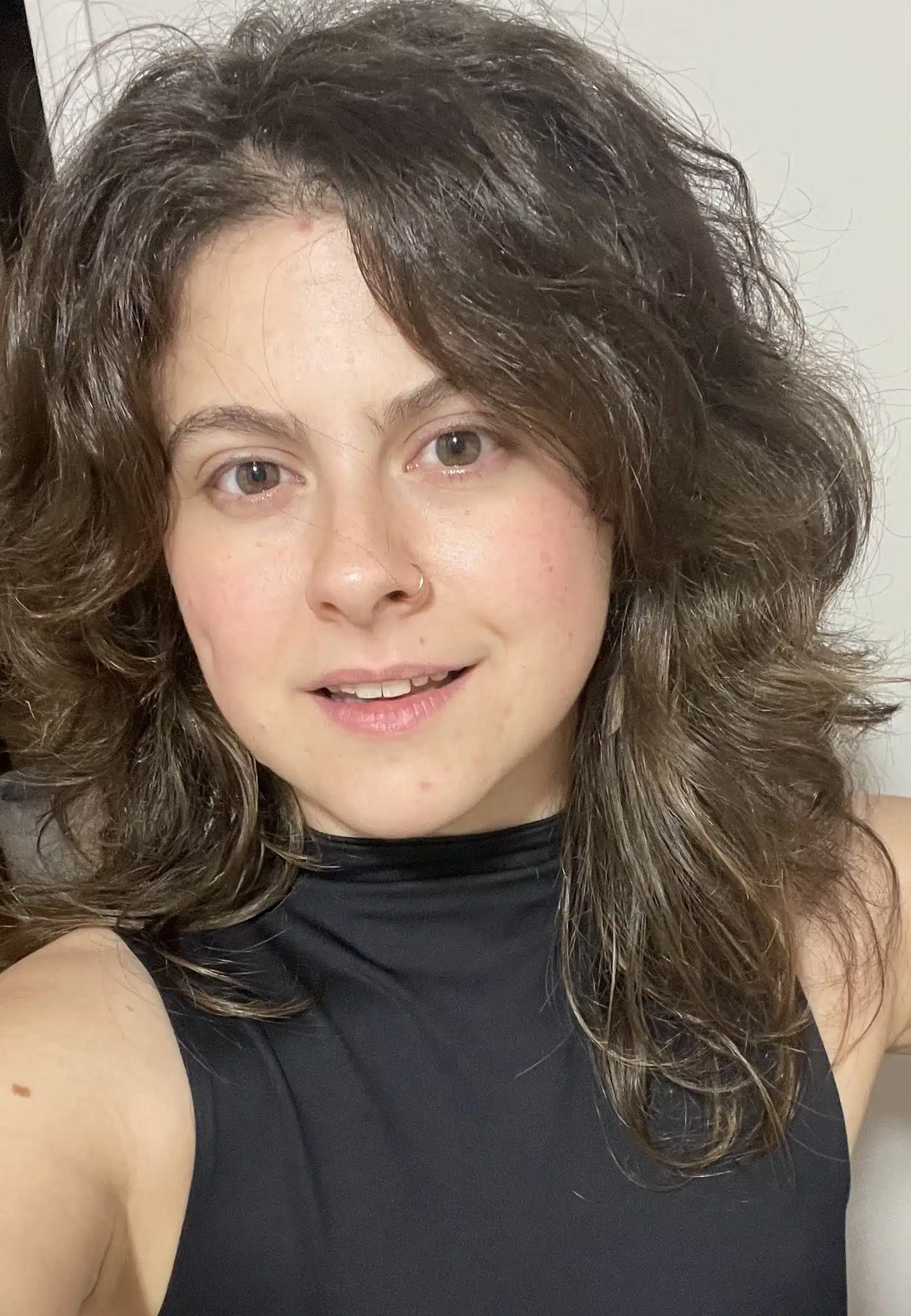
Florencia Oliveto – Content Writer
A skilled writer with a background in audiovisual design. She combines her knowledge of the video production process with a genuine passion for digital marketing. Her goal is to deliver high-value content that’s not only educational but also engaging and easy to understand.

